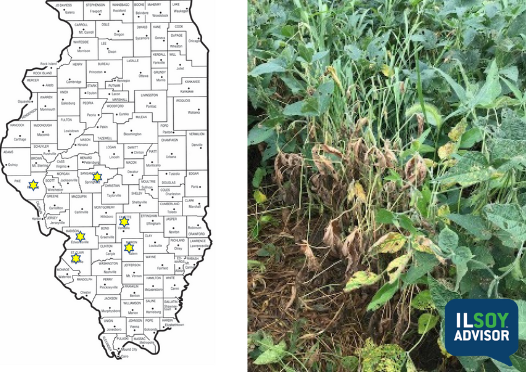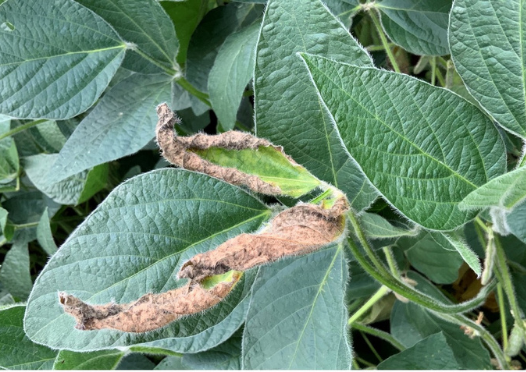ILSOYADVISOR POST
2015 Soybean Disease Update
Something is rotten at the University of Illinois Plant Clinic. Root rots have been the dominant diseases we have diagnosed this growing season on soybean samples. Cool spring and summer temperatures, wet soil, and non-stop rain events have driven the root rot train. Three genera of organisms (Rhizoctonia spp., Pythium spp., and Phytophthora spp.) are responsible for most of these rots. We have diagnosed all of these pathogens causing significant plant damage with Pythium root rot in the lead.
Pythium infects at all stages of development, and is active in wet soils. Pythium is a soilborne, fungal-like pathogen. Several different species of this pathogen damage soybeans. The various species of Pythium that infect soybeans have a wide host range that can include corn and many other crops. The disease occurs in wet and cool conditions and in low, poorly drained areas, particularly on clay and compacted soils. The Pythium season went on for an extended period this season. If you had affected fields this year, keep in mind that you may need to make a management decision about seed treatments for next year because of the increase in inoculum. Some seed treatments can reduce seed and seedling rot.
Rhizoctonia has been the other big player this season. The soilborne fungus Rhizoctonia solani causes Rhizoctonia root rot. Infection by Rhizoctonia alone typically will cause reddish or purple lesions at the soil line. A general rot of the taproot may also occur. Plants infected by Rhizoctonia usually make an attempt to re-root. So if soil moisture is adequate (not flooded) the plant may recover.
Typically Rhizoctonia is favored by moist conditions at planting followed by some stressful condition that slows down the growth of the root system. Dry weather as the plants begin to emerge and grow is probably the most common stress factor leading to infection by Rhizoctonia we traditionally think about. That is not what happened this year though; just the opposite – too wet, too cool and slow plant emergence into an environment where surface applied herbicides had been used. Compaction from field work or ponding compounded the stresses in our samples. For next season, dealing with compaction, improving drainage if possible and careful seed treatment selection will be important.
Foliar and stem blights have just begun to be submitted here at the Clinic. Wet weather has been extremely favorable for fungal pathogen infection and development, stay tuned. Keep scouting.
Suzanne Bissonnette is the Plant Diagnostic Clinic director and IPM coordinator at University of Illinois Extension, Department of Crop Sciences.




Comments
Add new comment